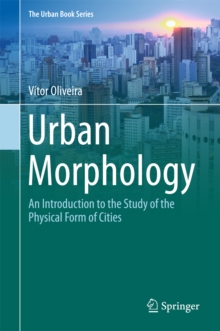
Urban Development and the Panama Canal Zone : The Case of Fort Clayton Hardback
by Graciela Arosemena Diaz, Almyr Alba, Maria Sanchez de Stapf
Part of the The Urban Book Series series
Hardback
- Information
Description
The construction of the Panama Canal at the beginning of the twentieth century created an enclave that ran parallel to the interoceanic waterway, controlled by the US government: the Canal Zone.
This book aims to understand the implications that Panama Canal Zone urban planning had on human health, natural resources, and biodiversity through the study case of Fort Clayton, highlighting how the sanitary concerns shaped building regulations and the urban landscape of towns. This book highlights the role of North American entomologists and health workers in developing control strategies for diseases transmitted by mosquitoes and how mosquito’s ecology determined building regulations that shaped the image of the Canal Zone towns.
On the other hand, the book determines the environmental assessment of Fort Clayton, determined by the two fundamental aspects that set on the environmental impact of an urban settlement.
The first one is the suitability of the site's location.
The secondis the urban structure of the adopted city model and its impact on the connectivity of the surrounding forests during the twentieth century. This text is aimed at both undergraduate and postgraduate students, architects, urban planners, historians, and environmental science professionals.
Information
-
Out of StockMore expected soonContact us for further information
- Format:Hardback
- Pages:222 pages, 92 Illustrations, color; 33 Illustrations, black and white; XXXII, 222 p. 125 illus., 92
- Publisher:Springer International Publishing AG
- Publication Date:28/09/2023
- Category:
- ISBN:9783031387692
Other Formats
- EPUB from £67.58
Information
-
Out of StockMore expected soonContact us for further information
- Format:Hardback
- Pages:222 pages, 92 Illustrations, color; 33 Illustrations, black and white; XXXII, 222 p. 125 illus., 92
- Publisher:Springer International Publishing AG
- Publication Date:28/09/2023
- Category:
- ISBN:9783031387692



